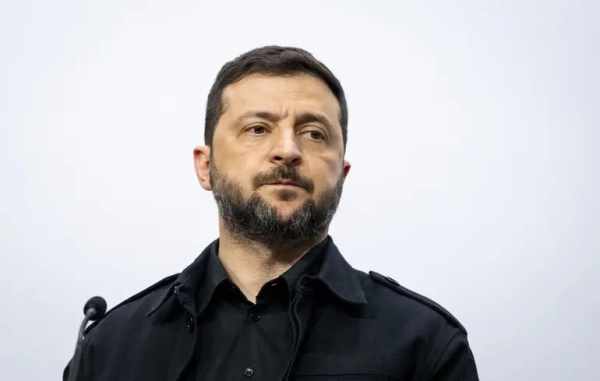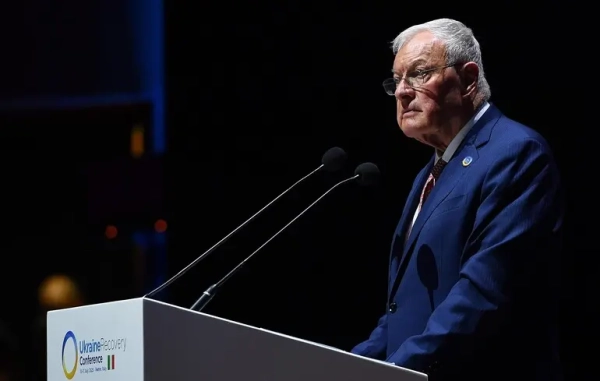
There will be a new House election in North Carolina’s Ninth Congressional District, after the state elections board ruled Thursday that a bizarre ballot tampering scheme had tainted the basic fairness of the November vote.
The new election would start with a new primary election, under a recently passed state law, to determine the Democratic and Republican candidates. On Election Day, Republican Mark Harris led Democrat Dan McCready by fewer than 1,000 votes, but his win was never certified by the state after allegations of electoral misconduct became public. The timing for the new elections will be announced soon.
Over the past four days, state investigators laid out in detail an “unlawful,” “coordinated,” and well-funded plot to tamper with absentee ballots in a US House election that remained uncalled more than three months after Election Day — finally bringing some clarity to one of the strangest election scandals in recent memory.
State investigators established their theory of the case — that a Republican operative, Leslie McCrae Dowless, directed a coordinated scheme to unlawfully collect, falsely witness, and otherwise tamper with absentee ballots — and workers who say they had assisted him in the scheme delivered damning testimony describing their activities. Dowless himself refused to testify, on the advice of his lawyer.
On Thursday afternoon, after four days of evidence indicating fraud and an attempt to conceal the scheme from state investigators, Harris himself told the state election board that he believed a new election should be called. The board voted to do so soon afterward.
A top political consultant for Harris’s campaign and the candidate’s own son had given their own remarkable testimony about the decision to hire Dowless. The consultant, Andy Yates, and John Harris both insisted Harris did not know what Dowless was doing and proved too trusting about the operative’s claims. Yet John Harris did say that he had warned his father that Dowless’s prior work on absentee ballots seemed like it could be illegal, a warning that went unheeded by the candidate. His testimony left Mark Harris in tears.
The board — made up of three Democrats and two Republicans — had reconvened after Democratic Gov. Roy Cooper named new members amid an unrelated legal dispute. They reviewed the evidence in the case over two days and then voted to call for a new election at the hearing’s conclusion.
Under state law, the board is able to call a new election if the basic fairness of the election was tainted. It doesn’t matter whether the number of votes in dispute would have been enough to swing the outcome.
For the House, the question is whether the Democratic majority will grow by one more seat or not. But the voters in the Ninth District will get the chance at a clean election after the state’s investigation brought to light a convoluted scheme to collect, witness, and tamper with absentee ballots in this district along the state’s southern border.
What we’ve learned about the alleged ballot tampering
It’s important to remember two things about absentee ballots in North Carolina: Anybody can request one, and at the end of every day before the election, state officials publish a file of which voters requested an absentee ballot by mail and whether they have returned it to be counted.
A campaign could check that file every morning to know how many registered Republican, Democratic, and unaffiliated voters had requested and returned a mail-in ballot.
“From a mechanics point of view, this is a gold mine of information for candidates and their campaign,” Bitzer told me previously.
That treasure trove of data would have given Dowless and the people he worked with a detailed picture of how many absentee ballots were coming in every day from Republican, Democratic, and unaffiliated voters — and, by extension, how many absentee ballots they needed from their voters to keep pace with the Democrats. Indeed, some of the workers who testified before the board Monday described Dowless discussing with other operatives how many votes were needed to match the Democratic turnout and informing Harris that the early vote totals looked promising for the Republican.
Investigators working on behalf of the North Carolina election board started Monday’s hearing by laying out the contours of the ballot tampering scheme, which they say was led by Dowless, and then questioned Lisa Britt and several other women who worked for him. Britt, who was Dowless’s stepdaughter for a time and said she remained close to him, said she believed that she and Dowless had done something wrong. But she insisted more than once that the GOP candidate, Harris, had not been privy to the plot.
Between the opening statement from investigators, Britt’s testimony and corroborating testimony from other witnesses, here is what we learned about the alleged ballot tampering scheme:
- State investigators said Dowless had used absentee ballot request forms for prior elections to “pre-fill” forms for the 2018 election and sent out workers to find the voters so they could sign the forms and request a ballot — they described this as “Phase One.”
- The workers allegedly presented the forms to Dowless and received a payment from him, based on how many they brought in, and then sent the forms to the board of elections.
- At least 780 absentee request forms were allegedly submitted by Dowless or one of his workers.
- For “Phase Two” of the operation, investigators said, Dowless sent out workers to collect the absentee ballots from voters.
- Some of the ballots the workers collected had not been signed by witnesses or had not been sealed and the workers again took those ballots to Dowless and received payment in return.
- Dowless held on to the returned ballots and instructed workers to falsely sign as witnesses for some of the ballots he collected, according to investigators.
- To avoid raising the suspicions of state officials, the ballots were mailed in small batches, from post offices near the voters’ homes, and the workers made sure that the dates of their signatures and even the ink they used matched that of the voters.
- Britt affirmed much of the investigators’ case in her testimony, testifying that she had collected ballots, that Dowless had instructed people to sign ballots they had actually not been there to witness, and that she had signed her mother’s name on some ballots so they would not raise suspicion from the state board.
- Britt testified that if the ballots were left unsealed and there were elections left blank, she would fill in some of the empty offices — again, this was done to avoid arousing suspicion from state election officials. (She did emphasize she had never filled in Harris’s name on a ballot, because voters typically only filled in the congressional races and a few others.)
- Britt also testified that Dowless had reached out to her shortly before Monday’s hearing and provided her with a statement so she could plead the Fifth during her testimony.
Collecting an absentee ballot for another person and falsely witnessing a ballot — two of the allegations made in the witnesses’ testimony — are violations of state law, according to the state investigators.
Britt, Andy Yates, and John Harris have been emphatic that Harris was not aware of the plan. Investigators and Democratic lawyers still grilled Yates about his failure to identify Dowless’s prior criminal history while he was working for Yates’s firm on Harris’s campaign. John Harris also told the board that he had warned his father that Dowless might have conducted illegal electioneering in previous elections — but his father hired Dowless anyway.
It remains to be seen whether criminal charges will be pressed in the case. But the political question is now settled: There will be a new congressional election in the Ninth District.
Sourse: vox.com






